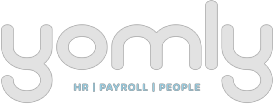Navigating The Challenges Of Remote Workforce Management
Many HRMS have features that assist with remote workforce management. The landscape of HR and payroll has witnessed significant transformations in recent years, with remote work taking centre stage. Organisations across the globe, including those in the UAE, have rapidly adapted to this new paradigm, integrating technology and innovative practices into their daily operations. The rise of remote work has brought forth a set of unique challenges and opportunities for Human Resources Management Systems (HRMS). These systems are pivotal when addressing the complexities of managing a dispersed workforce while ensuring operational efficiency and compliance with regulatory standards. This article delves into the intricacies of remote workforce management, exploring effective strategies and tools that organisations can leverage for optimal performance.

Why Remote Work Is Still Popular In 2024
Remote work became a hot topic in 2020, but instead of dying out and operations returning to normal, it has become more popular than ever. The allure of flexibility and the ability to balance work with personal life remain the primary drivers for its continued popularity. In 2024, technology advancements will only further facilitate remote work, breaking down geographical barriers and fostering a global talent pool. Companies that have embraced this model benefit from reduced overhead costs and access to a wider range of skills. Conversely, some firms remain hesitant, citing concerns over team cohesion and productivity. However, the prevailing trend suggests that remote work is not just a temporary shift but a permanent feature in the modern corporate landscape.
How To Use HR Software To Manage Remote Workers
Managing remote workers effectively requires a robust remote HR software system. At Yomly, we understand the nuances of remote workforce management. Our HRMS software is designed to streamline processes, from recruitment and onboarding to performance monitoring and payroll management. A key aspect is the integration of real-time communication tools and project tracking features, allowing managers and team members to stay connected and aligned with organisational goals. The software also offers analytics and reporting capabilities, enabling data-driven decisions that enhance productivity and employee engagement. By leveraging such comprehensive solutions, organisations can effectively navigate the complexities of managing a remote workforce.
Additional Communication Strategies For Remote Team
With remote workers, you cannot always speak face-to-face. It is therefore vital to have consistent communication strategies in place to ensure that you can communicate with them (and vice versa) to ensure streamlined operations. One effective strategy is the implementation of regular virtual meetings, using platforms that facilitate both audio and video interactions. These meetings help maintain a sense of team unity and ensure everyone is aligned with the company’s objectives. Another key strategy involves the use of collaborative tools,such as shared digital workspaces, where team members can work on projects simultaneously, irrespective of their physical location. These strategies not only bridge the communication gap but also foster a culture of inclusivity and collaboration.
Performance Management and Accountability
With remote workers, there are certain challenges when it comes to performance management and accountability. The absence of a physical office environment necessitates a more structured approach to monitoring performance and ensuring accountability. Setting clear expectations, measurable goals, and regular feedback sessions are crucial components of this approach. Performance management tools integrated within HR systems like those provided by Yomly, play a significant role in this aspect. They offer a transparent platform for tracking progress, identifying areas for improvement, and recognising achievements.
Managing a remote workforce effectively demands a strategic approach, underpinned by robust HR systems and effective communication strategies. The insights and strategies discussed here aim to guide HR professionals and management in fostering a productive, accountable and connected remote workforce. As the corporate world continues to evolve, embracing these practices will not only address current challenges but also prepare organisations for future shifts in the work environment.
Book a product tour today to see how you can use our HRMS for effective remote workforce management!
How do you handle time zone differences in a remote workforce?
To handle time zone differences in a remote workforce, it’s essential to establish a core hours policy where all team members are available for collaboration. Additionally, using scheduling tools that display multiple time zones can help in planning meetings and deadlines effectively.
What are effective strategies for tracking remote employee productivity?
Effective strategies for tracking remote employee productivity include setting clear, measurable goals and using project management tools to monitor progress. Regular check-ins and feedback sessions also provide insights into their performance and any support they might need.
How can remote workers be effectively integrated into existing teams?
To effectively integrate remote workers into existing teams, encourage regular virtual team-building activities and foster an inclusive culture through open communication channels. It’s also beneficial to pair remote workers with in-office mentors to facilitate smoother onboarding and team cohesion.
